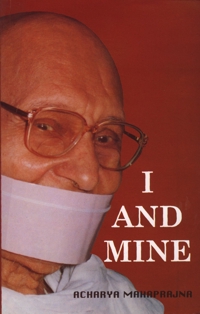
The lamp of the curiosity for truth has extinguished in the people who believe that they should say and do what has been said and done conventionally. By their own admission such people have attained truth. There is nothing left for them to attain, not even truth. But the question arises, 'Have we attained the whole truth?' If we indeed have, then no more spiritual and austere practice is needed. For, such practice is needed when we accept the truth already attained and seek that which still remains unattained.
The world of religion has bred a great illusion. It is based on wrong insistence. If one insists that what one believes is true, it may be unobjectionable. But if one insists that all belief other than one's own are untrue, it cannot be unobjectionable. At present most insistence is of the latter type. Therefore, sects are mutually antagonistic.
Sects are the vehicles of tradition. Powerful Acharya's doctrine brings into being a sect and following it gives rise to tradition. Every sect and tradition represents a fragment of truth. Some sects are representative of greater fragments than others. But complete truth dawns only with self-awakening.
A seeker after truth is primarily oriented towards the end and only secondarily towards the means, whereas a sectarian person is primarily oriented towards the means and only secondarily towards the end.
It is also a mistake to believe that no one subscribing to a sect can be a seeker after truth and no one outside a sect can be falsely insistent, or traditional. If sects and curiosity for truth had been mutually inconsistent, either sects would have become extinct or nothing would have been left of curiosity for truth. Both exist. It means that there is no inherent contradiction between sects and curiosity for truth.
The antagonism between sects is not because they support different viewpoints, but because their followers have little curiosity for truth.
If we want sects to integrate, harmonize and be friendly towards one another, it is necessary first to wish that the sectarian people should have curiosity for truth roused in them. I shall show how weak this curiosity is today with the help of the mental state of Jain sects.
Everyone asks the same question, 'How has it come about? This was not done earlier, then why is it being done now?' It is rarely asked whether what is being done is right or wrong. It is possible to deeply deliberate over and investigate the right and the wrong, but it is not possible to do so in the case of what in the past was not what now is.
It is because of this mentality that Jain Acharyas hesitate to make even desirable changes. It is not wise to change a living, vibrant tradition; nor is it wise not to change a moribund tradition.
At present many Jain thinkers and scholars are nurturing this doubtful state of mind whereby, though convinced of the inaptness of the given mode of interpretation, they hesitate to change it simply because it has been in vogue for a very long time. A tradition acquires an invariable status of being perennial, if it has been nurtured for a long time and has been assimilated by generations of people. But the dictates of truth are different. No man-made law is permanent or eternal. Anything created by man is limited in time. Only that is timeless which has not been made - which is natural.
No tradition is independent of space, time and circumstances. Let us consider Paryushan or Samvatsari (the annual ceremony of worship). Paryushan is indicative of a two thousand five hundred years old state of the rainy season. Today all kinds of myths have been added to it. As a result it is highly controversial. Different traditions set its date as the fourth, fifth and the fourteenth day of the lunar calendar. Even among those who subscribe to the fifth day, there are those who calculate the new day with the rise of the sun and those who calculate it according to the change of date in the timepieces. The basic element of Paryushan has been lost and the time when it should be observed has become all-important. Similarly innumerable other questions, which were secondary, have become primary and those, which were primaryhave, become secondary. Right answers to these questions can be found only by relating tradition with truth. The truth we could not discover until yesterday can be discovered tomorrow. Research and achievements in the field of truth will continue so long as man exists.
Many of our problems will be solved if we evince as much faith in the truth yet unknown as we do in that already known. The royal road to the accomplishment of truth is the awakening of spiritual consciousness. The sharper our spiritual experience, the less wrongly insistent our intellect, There is no greater hindrance to truth than wrong insistence. Such an insistence is nourished by an intellect not refined by spiritual concern. We should give primacy to the processes of spiritual development if we want to see unity and end of ill will among religious sects. Whether we know it or not, the development of the above processes is tantamount to the development of unity and harmony and their decline means the decline of unity and harmony.
 Acharya Mahaprajna
Acharya Mahaprajna

